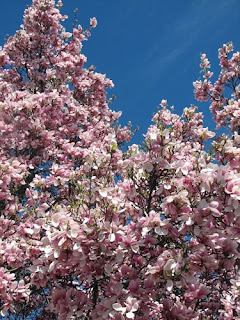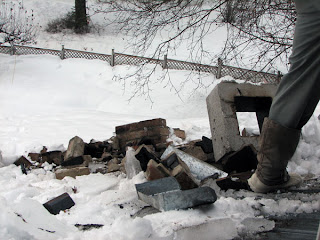We Were in Lavender Country!
On a recent trip to Provence (October 2009) we went to a lavender museum in the small town of Coustellet, which is about 40 km east of Avignon. I wasn't sure what to expect, as I had to wonder what could be of interest there...
The first thing you learn is that there are two types of lavender used in the perfume industry. Since I am very interested in plants, it immediately became interesting.Neither of these are the ornamental lavenders we grow in our gardens. One is referred to as fine lavender and it is distilled and sold as a perfume. It is very expensive. It is very hardy and and grows from 800 mt (~2500') to 1400 mt (~4500') in altitude.
(taken from the website of the Lavender Museum)
The hybrid lavender is referred to as lavandine. It grows in limestone soils, below 600 mt (~2000'). The perfume has a camphor smell, though you can still tell that it is lavender. It is used to scent things like wash detergent and is called an industrial perfume. It is no longer cultivated in France. Next was a movie. We were horrified to learn that after the perfume is distilled the waste material (flowers and stems) is dumped over a bank and burned. We mentioned our dismay to the young lady at the front desk, and it seems that others had made a similar comment. She said that the material could not be composted. I was willing to allow her that (after all, she was just an employee) but I asked her to inform her bosses that the material could be shredded and used as mulch, tilled into the soil, etc. I was pleased to see that my son felt as strongly about this as I did!
Once in the actual museum we were handed an object about the same size as a walkie-talkie, which explained all the exhibits to us. They have them available in many languages. We simply pressed the button of the display and we got an excellent explanation. This made a huge difference to our enjoyment of the museum. The tour went at whatever pace you wanted it to and you didn't have to read anything.
On the left in the poster is described the fine lavender, and on the right is the lavandine. It takes 130 kg of lavender flowers to make one kg of essential oil and 20 to 25 kg of essential oil is produced per hectare (2.5 acres). No wonder its so expensive!
Lavender blooms in June, July and early August and is harvested when in full bloom. The countryside is a patchwork of purple fields during bloom-time and many artists are inspired to paint the scene.Labels: Lavender, Lavender Museum

















